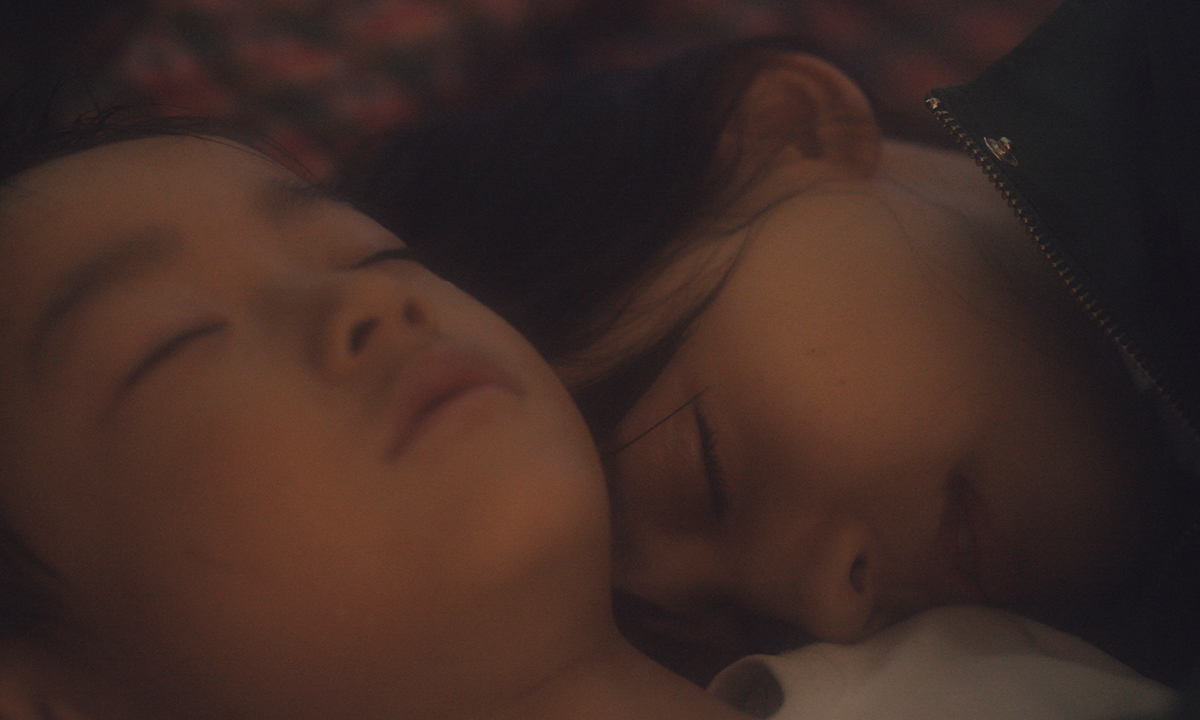Time travel, time convergences, causalities, and such are usually the stuff of sci-fi or fantastical adventures most recently seen in that movie involving a certain “time heist.” That is not to say the narrative devices can not be used on a smaller scale to equally entertaining and even more profound results. Such is the case with Takayama Kohei’s smartly structured mid-length Invisible Creatures.
Opening with an atmospheric shot introducing two of the central characters–or maybe just one–the strange set up begins a bizarre journey down a Mobiüs strip intertwining what had once happened with what will become. Confusing perhaps, but such is the intent of the movie’s early Lynch-ian developments designed to cast doubt on the situation as much as the male protagonist doubts the old man who claims to be his future self. Whatever “message from the future” the old man may have is garbled and confused as its messenger. As the two mock one another with almost characteristically similar mannerisms, the situation grows more bewildered and frenzied until something happens; a moment of clarity for both in which they recall wanting to become invisible and a forest where only invisible creatures can enter.
From there what transpires is the “present” making amends with the “past”; their convergences leading to self-discovery. On a genre level, Takayama handily creates a narrative about cause and effect, setting past, present, and future on an intriguing collision course through which a cycle is repeated from father to son to daughter. There’s certainly some familiarty to be found in the broader strokes, but this is less a story about undoing the past than it is learning to recognize who you are now from the context of who you had been. Therein lies the true heart of the movie, reinforced by Takayama’s storytelling which–no matter how phantasmagorical–deals with a universally tangible theme.

From the outset of the movie, the idea of becoming invisible is introduced to the young boy central in the story. The forest previously mentioned is a place to reunite with his “grandfather.” Made to feel transparent (the literal translation of the Japanese “tomei”) by his father, he is left with no other recourse than to try invoking some magic so that he may become as invisbile as he is treated. The fanciful notion seems like a typical way a child might deal with playing alone, like an imaginary friend. However, it’s when the story returns to a young girl also seen in the first act arguing with a middle-aged man who summarily dismisses her, telling her to go be with her real mother that the essence of being “transparent” and resolving “to disappear” takes on real-world familiarity. Estranged from her inadequate birth mother, paid little attention from her father, and without friends at school her plight as a teen takes on sympathetic significance; much more so considering a young boy could have similar feelings. When these two meet, there is immediate empathy between them–as if they know one another.
How all this concludes is something best experienced by viewers first hand. Suffice it to say, the offbeat turn of events of the first half literary emerges from the fog with a heartfelt story of the cyclical nature of human beings and seeing one’s part in perpetuating or breaking one’s own cycle.
The Screening
I had not seen Takayama-san since first meeting him at the Osaka Asian Film Festival in 2018, though we have kept in touch. I was more than happy to have this opportunity to speak with him at the screening event, touching base on what he was trying to accomplish with this movie in comparison to The Path Leading to Love. Before the screening began, Takayama-san revealed those in attendance were to be the first to view the completed movie other than himself; those he had invited were the people he wanted to see it. I felt an extra sense of honor when he said this as there were some recognizable names in Japanese film journalism also in attendance.
Invisible Creatures was completed through crowdfunding and there was a second screening for donators immediately after the one I attended so the reception area at the Film School of Tokyo was packed with supporters waiting to enter the screening theater. This meant I only had a short moment to express my quick thoughts on the movie to Takayama-san before having to leave, but I later emailed him a more detailed comment. He later replied that because it’s such an unorthodox movie and people who came to see it were expounding their impressions or interpretations of it, he feels the movie is truly coming to completion as a creative work through this collective sharing.
To that end, Takayama-san is naturally looking to harness screenings at home and abroad to further that sharing. Inquiries can be made at Takayama-san’s homepage by clicking here.
